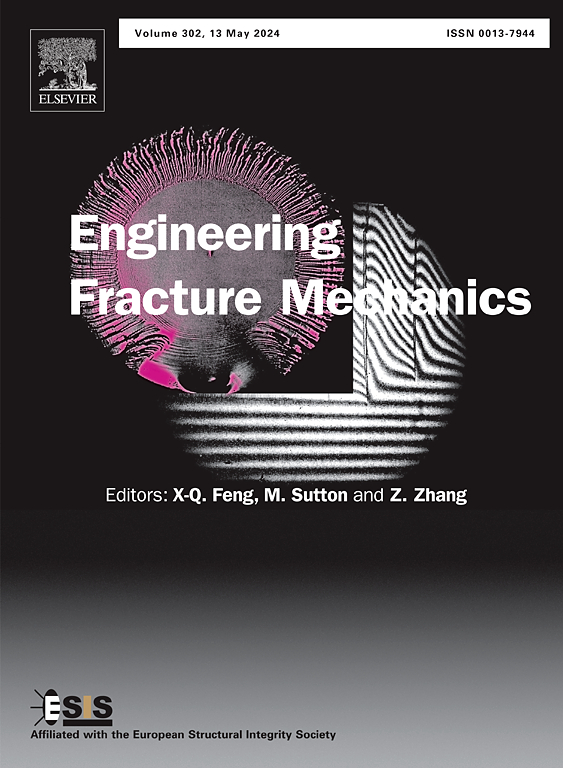An evaluation method for the hygrothermal effect on fatigue crack propagation in CFRP–strengthened RC beam
IF 4.7
2区 工程技术
Q1 MECHANICS
引用次数: 0
Abstract
Hygrothermal effects on the fatigue crack propagation behavior of Carbon fiber reinforced polymer (CFRP)–strengthened reinforced concrete (RC) beam was studied based on experimental and numerical methods. Quasi-static tests and hygrothermal fatigue tests of RC beams were conducted to investigate the coupling effect of the hygrothermal environment and fatigue load on the crack propagation behavior. Digital image correlation (DIC) method was applied to track the whole process of fatigue main crack initiation and propagation in real time, in order to obtain the fatigue crack length and crack propagation rate. Stress intensity factor (SIF) of main crack was calculated through finite element method considering material nonlinearity and hygrothermal influence. Results showed that SIF considering hygrothermal influence slightly increased compared to that at indoor atmospheric environment, and the influence of temperature on SIF was greater than that of relative humidity. The fatigue crack propagation curves showed a segmented phenomenon and different fitting function were adopted. It was found that the fatigue crack propagation rate increased with the increase of temperature at the same maximum stress intensity factor Kmax. However, the increase of relative humidity had a limited effect on the fatigue crack propagation curves, showing less influence on the fatigue crack propagation behavior compared with that of temperature. Finally, environmental equations based on Paris Law were proposed to quantify the effect of temperature and humidity on fatigue crack propagation in RC beams strengthened with CFRP.
求助全文
约1分钟内获得全文
求助全文
来源期刊
CiteScore
8.70
自引率
13.00%
发文量
606
审稿时长
74 days
期刊介绍:
EFM covers a broad range of topics in fracture mechanics to be of interest and use to both researchers and practitioners. Contributions are welcome which address the fracture behavior of conventional engineering material systems as well as newly emerging material systems. Contributions on developments in the areas of mechanics and materials science strongly related to fracture mechanics are also welcome. Papers on fatigue are welcome if they treat the fatigue process using the methods of fracture mechanics.

 求助内容:
求助内容: 应助结果提醒方式:
应助结果提醒方式:


